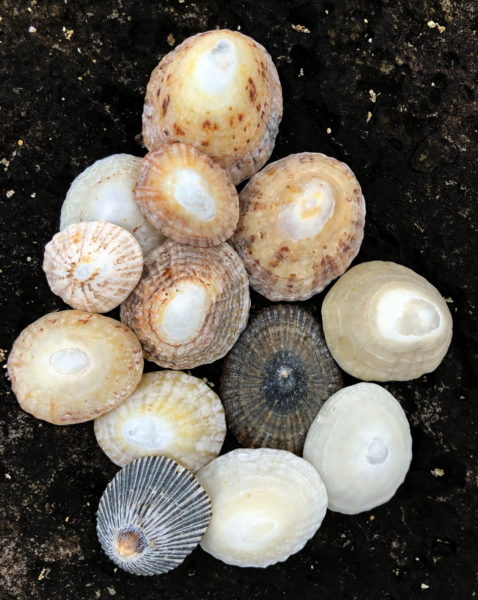Ocean Watch for April 8, 2020
On March 18th, state conservation officers arrested two men for illegally collecting 784 opihi from the Pupukea Marine Life Conservation District (bit.ly/39aMMYY). Besides being an outrage to those of us who appreciate Hawaii’s marine life for its singular beauty, this crime was an offence to people who love eating opihi.
Marine conservation areas aren’t just pretty places for people to snorkel, or areas designed to frustrate anglers. They’re a management strategy. By allowing opihi and other marine species to reach sexual maturity, we give them the chance to make more of their kind in places where it’s legal to take them.

I never acquired a taste for opihi, but I’ve always admired their shells. Pictured are some I found in various stages of aging on rocky beaches in Hawaii, Mexico and Australia. ©2020 Susan Scott
Stealing nearly 800 opihi from that protected area is like shutting down a food factory.
Opihi is the Hawaiian word for limpets, snails that shelter their soft bodies — highly valued as food in Hawaii — under pointy hat-shaped shells.
Each opihi is either a male or a female. When circumstances, such as length of daylight and food supply, are right, grown-up opihi send out chemical signals that tell their neighbors the time is right to release eggs and sperm into the ocean.
When opihi sex cells connect, they grow into a baby snail, called a veliger, with tiny flaps for swimming and eating. The youngster eventually transforms into a little opihi that settles onto a sunlit rock, crucial for hosting the food that opihi eat: algae.
An opihi’s strong muscular food scrapes a shallow indentation, called the home scar, in its rock, venturing out for veggie meals. When it has had its fill, the opihi walks back home and hunkers down.
Because the snails live in surf-swept areas, they’ve evolved to hang on with remarkable force, using the round muscular foot like a suction cup. Humans don’t have such holding power, and opihi pickers sometimes get overwhelmed by a surprise wave, wash into the ocean and drown. As a result, Hawaii’s opihi are also known “he ia make,” meaning creature of death.
Hawaii’s endemic blackfoot opihi, or opihi makaiauli, lives the highest up from the ocean surface, sticking to wave-splashed rocks. Another Hawaii-only species, the yellow-foot opihi, or opihi alinalina, lives at or just below the low tide line. Both these limpets grow to about two inches across. A third, the giant or opihi koele, lives below the waterline, often with seaweed and barnacles stuck to its shell. The well-named Giant opihi grow to 4 inches wide.
State law dictates that an opihi must be at least 1 and ¼ inch wide to collect. Taking any smaller than that, or from any of Hawaii’s MLCDs, regardless of size, is illegal. And selfish.
As well as extending aloha to one another during this trying time, we can help Hawaii’s wildlife and the conservation enforcement officers who protect them. Report illegal fishing or gathering to 808-643-DLNR (3567) or download the DLNR Anonymous Tip app on your phone.
A.A. Milne wrote in a poem that a snail named James “gave the huffle of a snail in danger. And nobody heard him at all.”
Opihi, we hear you.